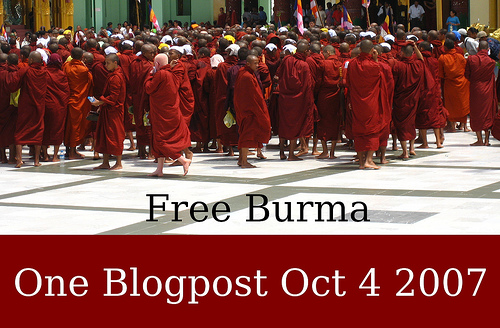Asia | Dominik Mayer – Products, Asia, Productivity
Here and There
The ground’s frozen and the snow stays. And they’re having T-shirt weather in Shanghai…
Back From Shanghai
A friend has been working in Wuxi for the last couple of weeks and spent several days in Shanghai. He returned today and brought along some great pictures. I’m really looking forward to going there.
And Tongji finally knows when I have to register: On February 20th or 21st, the semester will start on February 25th.
Foreign Fruits
A rather exotic birthday present were two fruits: A horned melon and a pitaya. They don’t only look unfamiliar, they also have an interesting taste.
Birth Defects
Every 30 seconds, a baby with birth defects is born in China. Alarming. I think I better not have a child there.
Chinese Doctors
I finally got the two Chinese to talk Chinese instead of English. So it’s only a matter of hours until they figure out whether there are doctor’s offices in China or not.
Bad, Bad RSS
Techcrunch reports that the Chinese Government has blocked all RSS feeds. Luckily, they still seem to be accessible through Google Reader.
Bad Skin
I really enjoy all the stories about China. And the helpful advice. I promise not to eat, to drink or to use water. And the good news won’t stop. A friend told me her boyfriend doesn’t look very well when returning from work there: bad skin, …
Picture China
Joachim Müller of Chinesisch Lernen discovered a nice web site about China:
Picture China is a photographic journey through contemporary China. From the teeming metropolises of the east coast to the rural villages of the interior to the lofty Tibetan plateau, New York City based photographer Dan Eckstein traveled 10,000km over the course of eight weeks to document this rapidly changing country. The result is a unique portrait of life in modern China and the issues that its people face.
(Quote: Picture China)
Plants, Marriages and Survival Tips
- Flight Mechanics I is not Flight Mechanics II. The same applies for the exams.
- Mechanics exams were longer two years ago.
- On a late trip to the botanical garden it’s advisable to visit the greenhouses first.
- If you want someone reluctant to come along, you just need to find the right person for asking.
- Bavarian politician Gabriele Pauli wants marriage to automatically end after seven years unless it’s been renewed.
- Coming back from Sweden to Germany is like switching from a monthly to a strip ticket.
- Pizza in TribüHne is inexpensive and tasty.
- You better don’t eat anything in China and use tap water only for showering, bottled water for everything else.
Awaiting Chinese Books
I finally decided to get the books of the New Approaches To Learning Chinese series: Intensive Spoken Chinese, The Most Common Chinese Radicals and Rapid Literacy in Chinese. The reviews are quite promising and the method convinced me. As the books are already sent, I hope they’ll arrive tomorrow.
Chinese Textbooks
The Chinese course I attended last year used the book Chinesisch für Deutsche (Chinese for Germans). The problem is that it doesn’t contain information on how to write Chinese characters at all. You have to figure it out by yourself. And the first dialogs are about mother, father, cat, dog and the fact that some students learn while others have a break. Not the kind of vocabulary that I suppose is most needed during the first days in Shanghai.
So I think about getting a new book. ChinesePod is going to cover Integrated Chinese throughout the next semester. I also read about the New Practical Chinese Reader which is prefered by some reviewers. How on earth should I know which one is better?
Golden Shield
I just told a Chinese friend that I started blogging but she couldn’t open the page. Google found out why. Wordpress.com, where this blog is hosted, is blocked in China what might become a problem when studying there…
Singapore Flyer
Another reason for a detour to Singapore:
And it’ll open just in time.
Not Yet Arranged
I called Tongji University yesterday to ask them when the spring semester 2008 will start. They didn’t know, told me “the schedule is not yet aranged” and I should try again in november. The whole thing seems to depend on the Chinese Spring Festival whose date is well-known. I suppose it’s one of these intercultural challgenges we have to cope. ;-)
Just to show the difference to Germany: The winter semester 2008/2009 at TU München will be from October 13, 2008 until February 2, 2009.
